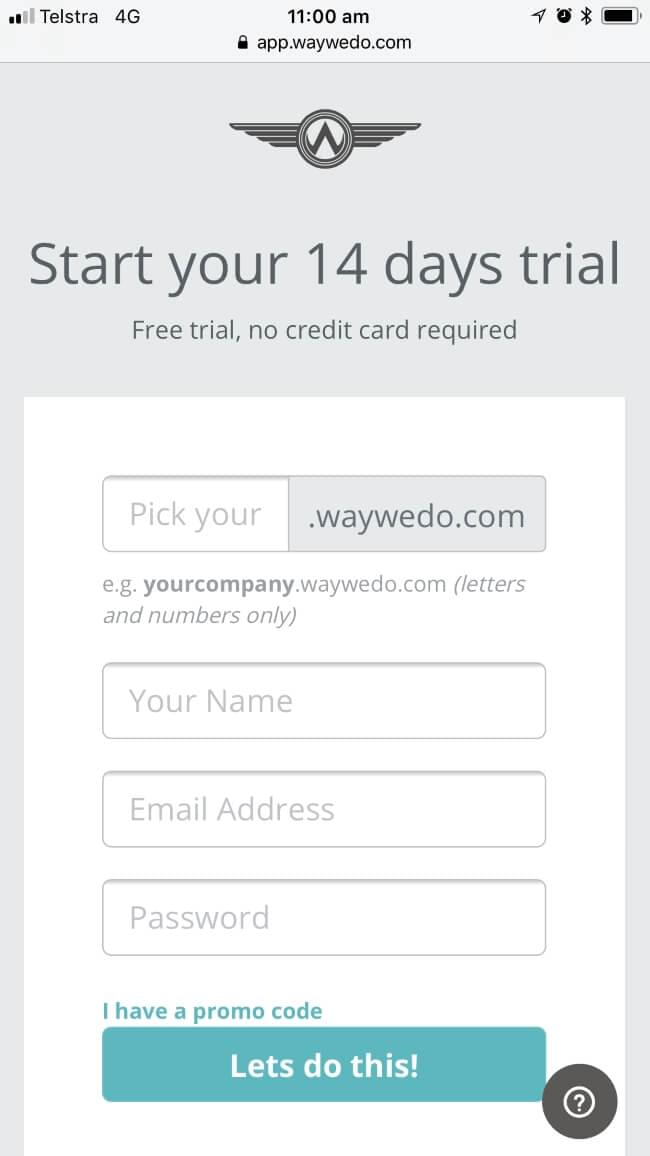Think playbooks are just for sports teams? Think again! They’re the unsung hero of the business world, too. And they can be a secret weapon for your success.
So what exactly is a playbook?
It’s basically the same thing as it would be in the sports world: An instruction manual for how to respond in a specific situation. Specifically, situations that you might not deal with every game (or business day), but that could have serious implications if they’re not handled just the right way. For your business, they could be things like customer complaints, cyber attacks, or an act of nature, like a flood or fire.
Playbooks, policies, and procedures: What’s the difference?
While playbooks, policies, and procedures share some similarities, there are important differences between them. We can summarize the key distinctions like this.
- Purpose
A playbook’s purpose is to provide a structured approach to dealing with complex or unpredictable situations. The purpose of a policy is to establish rules and guidelines for employees’ behavior and how they make decisions. A procedure gives detailed instructions on how to carry out a specific task or process the business conducts regularly.
- Scope
Playbooks typically focus on a specific scenario or event. Policies have a broader scope and apply to all employees within an organization. Procedures focus on specific tasks or processes, and can be used across different departments or areas of the organization.
- Level of detail
Playbooks can include a high level of detail, but are often more flexible than policies or procedures. Policies are usually written in a clear and concise manner, whereas procedures are typically very detailed, providing step-by-step instructions for completing a task or process.
- Application
Playbooks are typically used in areas like crisis management, cybersecurity, and sales.
Playbooks in action
Let’s have a look at some common examples of how playbooks can be used.
The Crisis Management Playbook
This one is like a superhero cape for your business and is a must-have for any going concern. It tells you and your team exactly what to do when things go south. Whether it’s a natural disaster or an incident that threatens to become a PR nightmare, a well-written crisis management playbook can help get you through. It’s the cool-as-a-cucumber sidekick you need when things are looking rough.
Let’s take a look at what is normally included in a crisis management playbook.
- Roles and responsibilities – This section outlines who is responsible for what in the event of a crisis. It’s important to have a clear chain of command so everyone knows what they need to do.
- Communications plan – In a crisis, communication is key. This section outlines who needs to be informed and when. It also includes templates for internal and external communications, like press releases and social media posts.
- Escalation plan – If the crisis escalates, you need to be prepared. This section outlines what steps you’ll take if the crisis gets more serious.
- Business continuity plan – When a crisis hits, it’s important to keep your business running. This section outlines the steps you’ll need to take to keep things going – for your team, and your clients.
- Training and drills – Practice makes perfect! This section outlines what training and drills you should carry out to make sure everyone knows what to do in the event of a crisis.
- Post-crisis review – Once the crisis has passed, it’s important to review what happened and learn from it. This section outlines the steps to take to conduct a thorough review and make improvements for the future.
- Risk assessment and prevention – The best way to deal with a crisis is to prevent it from happening in the first place. This section sets out what you need to do to identify potential risks and take steps to mitigate them before they eventuate.
- Recovery plan – You’ve made it through, but you still have work to do to recover. This section outlines the steps to take to get your business back on track and ensure long-term success.
Having a crisis management playbook gives everyone in your team a level of assurance that you’re prepared for anything that comes your way.
The Cybersecurity Playbook
With cyber-attacks becoming more common and more sophisticated, a cybersecurity playbook is an essential for your business armory. Like the Crisis Management Playbook, it sets out what your business will do in the event of a breach and how to prevent future attacks.
Let’s take a look at what this playbook should include.
- Roles and responsibilities – Just like in its crisis management colleague, this section outlines who is responsible for what in the event of a cybersecurity incident. A clear chain of command is vital so everyone knows what they need to do and when.
- Incident response plan – It’s important to respond quickly and effectively to any cybersecurity incidents. This section needs to outline what steps you need to take to contain the incident, assess the damage, and restore systems.
- Communications plan – Communication is key in any crisis, and a cybersecurity incident is no exception. This section outlines who needs to be informed and when. It also includes templates for internal and external communications, like press releases and customer notifications.
- Recovery plan – After a cybersecurity incident has been contained, it’s important to focus on recovery. This section outlines the steps to take to get your systems back up and running and ensure long-term security.
- Training and awareness – Prevention is the best defense against cybersecurity threats. This section outlines the training and awareness programs you should regularly conduct to ensure everyone in your organization is aware of cybersecurity risks and how to protect against them.
- Risk assessment and prevention – It’s important to identify potential cybersecurity risks and take steps to mitigate them. This section outlines the steps to take to assess risks and implement preventive measures.
- Incident reporting and analysis – Once you’ve resolved a cybersecurity incident, it’s important to conduct a thorough review of what happened and learn from it. This section outlines the steps to take to conduct an incident analysis and make improvements for the future.
The cybersecurity playbook is an essential tool for dealing with cyber related incidents, and how to prevent them. Knowledge is key if you and your team are to be properly prepared for any cyber threats to your business.
The Sales Playbook
Playbooks aren’t just for emergencies. They can be invaluable in everyday situations as well. Take the sales playbook, for example. This one is like a secret weapon for your sales team. It tells them exactly what to say and do to close a deal. From the initial pitch to the final handshake, the sales playbook covers it all.
Here are some key elements to include in your Sales Playbook.
- Sales process overview – This section outlines the overall sales process, from lead generation to closing the deal. It’s important to have a clear understanding of the sales process so your sales team can maximise their effectiveness.
- Ideal customer profile – If you want to target the right customers, you need a clear understanding of what makes them right for you. Right? This section outlines the characteristics of your ideal customer, including demographics, industry, and pain points.
- Sales messaging – Your sales messaging is the key to help your customers make the decision to buy your product or service. This section outlines the key messages and value propositions you offer potential customers so your team – both sales and after-sales – can deliver on expectations.
- Sales tools and resources – This section outlines what tools and resources are available to your sales team, including presentations, templates, case studies, and product demos.
- Sales tactics – Your sales team need a variety of tactics to help them close deals successfully and smoothly. This section outlines what specific tactics they should use at each stage of the sales process.
- Objection handling – It’s common for potential customers to have objections to the product or service being sold. This section outlines the most common objections and provides strategies for handling them effectively.
- Sales metrics and tracking – It’s important to track key metrics like win rates and deal sizes so you can measure the success of your sales team. This section outlines what metrics to track, and how to measure them, to keep your team performing at their best.
The beauty of a Sales Playbook lies in how it can keeps your team on the same page and working together to achieve the same goals for the business. It gives your team the confidence they need to do their job well, and provides a benchmark to refine strategies and tactics over time.
The Customer Service Playbook
This one is like a warm hug for your customers. It tells your customer service team how to handle every situation with grace and kindness. From angry customers to confused clients, your Customer Service Playbook will have the answers on how best to serve them.
Here are some core topics every Customer Service Playbook should have.
- Customer service philosophy – This section outlines the overall philosophy and approach to customer service everyone in your business should take – even if they’re not directly serving customers – to make sure you’re delivering consistent customer service at every stage.
- Customer service standards – If you want to provide high-quality customer service, it’s important to have clear standards that your entire team follows. This section outlines the specific standards your customer service team needs to follow, including response times and communication guidelines.
- Customer communication – This section outlines best practices for communicating with customers, including active listening, empathy, and clear communication. It also includes guidelines for how and when to use different communication channels, like phone and email, to best effect.
- Issue resolution – Another important aspect in customer service is being able to resolve customers’ issues quickly and efficiently. This section outlines what steps to take, including troubleshooting techniques and escalation procedures.
- Product and service knowledge – Your customer service team needs to have a deep understanding of the products and services you offer so they can provide effective support. This section outlines what training and resources your team has access to that makes sure they have the knowledge they need to do their job well.
- Customer feedback and metrics – Gathering feedback from customers and tracking key metrics are critical to helping you and your team enhance and improve customer service. This section outlines the different methods for getting customer feedback, and what metrics to track.
A Customer Service Playbook gives the business and your staff a clear roadmap for how to handle different situations, build in the knowledge and learning that will help you hone your service delivery, and most importantly, keep your customers happy.
Why playbooks?
We’ve laid out just some of the benefits playbooks can bring to your business. But if you’re still thinking ‘Surely there’s an easier way?’, my answer is simply, ‘This is the easier way!’ Your playbooks will save you immense amounts of time and stress over the longer term, and that’s the kind of focus you want if you plan to be running your business well into the future. Playbooks give your team a clear plan of action in situations like we’ve just covered. They give you a platform to onboard new staff, cross-train existing staff, and best of all, with playbooks in place, you don’t have to be managing the business every single day. Your playbooks give your team members the appropriate direction and authority to act independently.
Whether you’re dealing with a crisis, selling your product, or just trying to make your customers happy, having a playbook is the way to help your staff play better as a team and kick some serious goals.





